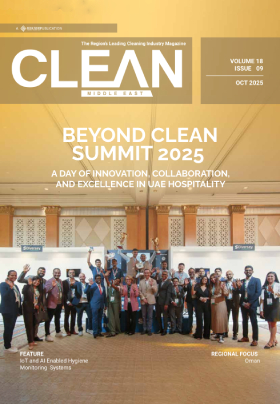
Many of these high tech facilities are what are termed ‘clean rooms’ and/or ‘controlled environments’. These terms go hand-in-hand.
A clean room refers to an environment that is free from dust and other contaminants. A controlled environment, on the other hand, helps keep a clean room dust and contaminant free by ensuring, for instance, HVAC and ventilation systems are HEPA filtered, to prevent contaminants from entering the clean room environment.
As you can imagine, effective and proper cleaning is crucial in helping to keep a clean room free of soils and contaminants. But what you may not realize is that the process necessary to maintain such spaces this clean is very dependent on a bottom-to-top approach to cleaning. This is the opposite of the usual top-to-bottom cleaning method used to clean schools, offices, and other types of facilities.
Here’s the reason. Several studies dating back to the 1960s have shown how settled dust on a floor becomes airborne as people walk or items are moved over the floor. Using more scientific terms to explain what’s happening, the walking or movement of items over the floor elevates concentrations of ‘particulate matter,’ otherwise known as dust, which are then ‘resuspended’ in the air and fall on to other surfaces.
Typically studies like this are conducted to see if less particulate matter is resuspended if someone walks over carpet, for instance, instead of a hard surface floor; it less dust is resuspended if it is dry or moist; the size or weight of the particulates; how gravity impacts airborne dust; etc. But for cleaning professionals, what we need to know is that when this happens, the dust or particulates on the floor are either going to be inhaled by people in the clean room or they will find their way onto counters, workstations, equipment, and other surfaces being used in the clean room. This can possibly skew testing results and high tech research. So by keeping floors properly cleaned and dust free, we are taking a big step towards maintaining a controlled – contaminant free – environment.
How can we keep clean rooms clean?
Cleaning professionals are the ones that will be asked to remove and prevent this resuspension of dust and soils. While there are other factors involved, preventing this from happening comes down to three things:
- What we wear
- How we remove dust from the floor
- How we clean the floor. Let’s look at each one of these in more detail below.
What we wear
People are actually the source of 80 percent* of the dust and contamination in any facility. Often this is because there are dust and soils being released from our clothing, shoes, skin, hair, cosmetics, etc. To prevent this from happening, cleaning workers must wear cleanroom clothing. This typically involves wearing body garments that cover the entire body, head to toe, along with shoe coverings. The garments protect the cleanroom environment, preventing dust and particulates from finding their way on to floors and other surfaces.
How we remove dust from the floor
When it comes to floor care, cleaning professionals are advised to never have the floors swept or dust mopped. This loosens dust, making it airborne, which then settles back onto work surfaces. Instead, always use highfiltration vacuum cleaners, with the same HEPA filters mentioned earlier used in HVAC systems. A backpack system or a canister model is preferable. Both types of vacuum cleaners are available with high-filtration systems, and they allow the user the flexibility to clean hard-to-reach areas and conduct high and low vacuuming.
How we clean the floor
Along with never dust mopping, we must avoid mopping cleanroom floors. Several studies prove that cleaning tasks such as mopping floors actually spread contaminants from one area to another. This starts as soon as the mop and mop water become soiled and builds as the process continues.
At this point, some readers may be stymied. How can you clean a floor without mopping? Fortunately, there are alternatives. For instance, one floor cleaning technology, similar to an automatic scrubber but at a fraction of the cost, releases cleaning solution directly to the floor. A pad agitates the floor to remove dust and soils, which are then vacuumed up by the machine. No soiled mops are used in the cleaning process. As the Middle East moves from a low tech to a high tech world, professional cleaning will have to make some big changes. Ways of cleaning just a few years ago simply will not make the grade. Cleaning professionals are advised to focus more time, energy, and resources into new technologies that clean more effectively. Fortunately, some of these new technologies are surprisingly cost effective as well.
About the Author: Marc Ferguson is the International Business Development Manager for Kaivac, developers of the OmniFlex™ Crossover Floor Cleaning System

.jpg)
.jpg)
 Search
Search.jpg)
